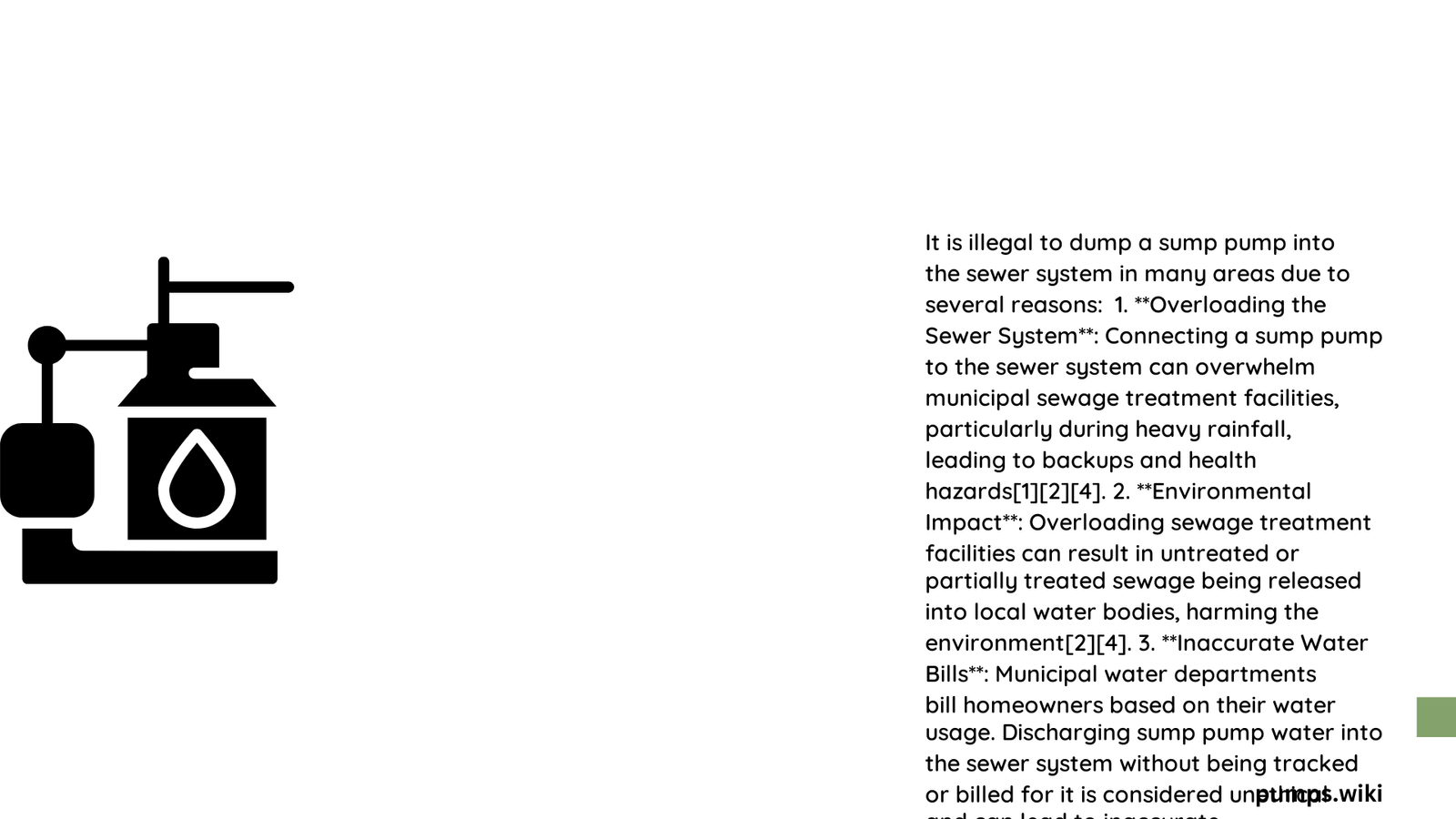Homeowners beware: discharging sump pump water into sanitary sewers is a serious violation of municipal regulations across Canada and the United States. This practice not only risks substantial legal penalties but also threatens local infrastructure, potentially causing environmental contamination, overwhelming sewage treatment systems, and resulting in significant fines that can range from hundreds to thousands of dollars.
Why Is It Illegal to Dump Sump Pump to Sewer?
What Happens When Sump Pump Water Enters Sanitary Sewers?
Sump pump water, typically clean groundwater, can cause significant strain on municipal wastewater infrastructure when improperly discharged. When homeowners illegally dump sump pump water into sanitary sewers, they create multiple problematic scenarios:
| Potential Consequences | Impact Level |
|---|---|
| Sewer System Overload | High |
| Treatment Plant Inefficiency | Medium-High |
| Environmental Contamination | High |
| Potential Infrastructure Damage | Medium |
Legal Framework of Sump Pump Discharge Regulations
Most municipalities have strict regulations prohibiting sump pump discharge into sanitary sewers. These regulations stem from several critical concerns:
- Infrastructure Protection
- Prevent overwhelming sewage treatment facilities
- Maintain system capacity and efficiency
-
Reduce maintenance and repair costs
-
Environmental Preservation
- Minimize water pollution
- Protect local water ecosystems
- Maintain water treatment standards
What Are the Specific Legal Consequences?
Homeowners who illegally dump sump pump water into sanitary sewers may face:
- Financial Penalties
- Initial fines ranging from $500 to $5,000
- Potential additional repair costs
-
Mandatory system modifications
-
Legal Repercussions
- Municipal citations
- Potential court appearances
- Mandatory compliance orders
How Should Homeowners Properly Discharge Sump Pump Water?
Proper sump pump water discharge requires strategic planning:
✅ Recommended Discharge Methods
– Direct to storm sewers
– Discharge onto grassy areas
– Ensure water flows away from foundation
– Maintain minimum 6-foot distance from house
❌ Prohibited Discharge Locations
– Sanitary sewers
– Neighbor’s property
– Areas causing water accumulation
– Near building foundations
Technical Considerations for Sump Pump Drainage
Effective sump pump drainage involves several technical considerations:
- Install check valves to prevent backflow
- Use durable PVC piping
- Bury discharge lines below frost line
- Ensure proper slope for water movement
- Consider professional installation
Potential Environmental and Infrastructure Impacts
Improper sump pump discharge can lead to:
- Increased sewage treatment costs
- Potential water contamination
- Reduced municipal infrastructure efficiency
- Higher risk of combined sewer overflows
Conclusion

Understanding and following local regulations regarding sump pump water discharge is crucial for homeowners. By adhering to municipal guidelines, you protect both your property and community infrastructure.
